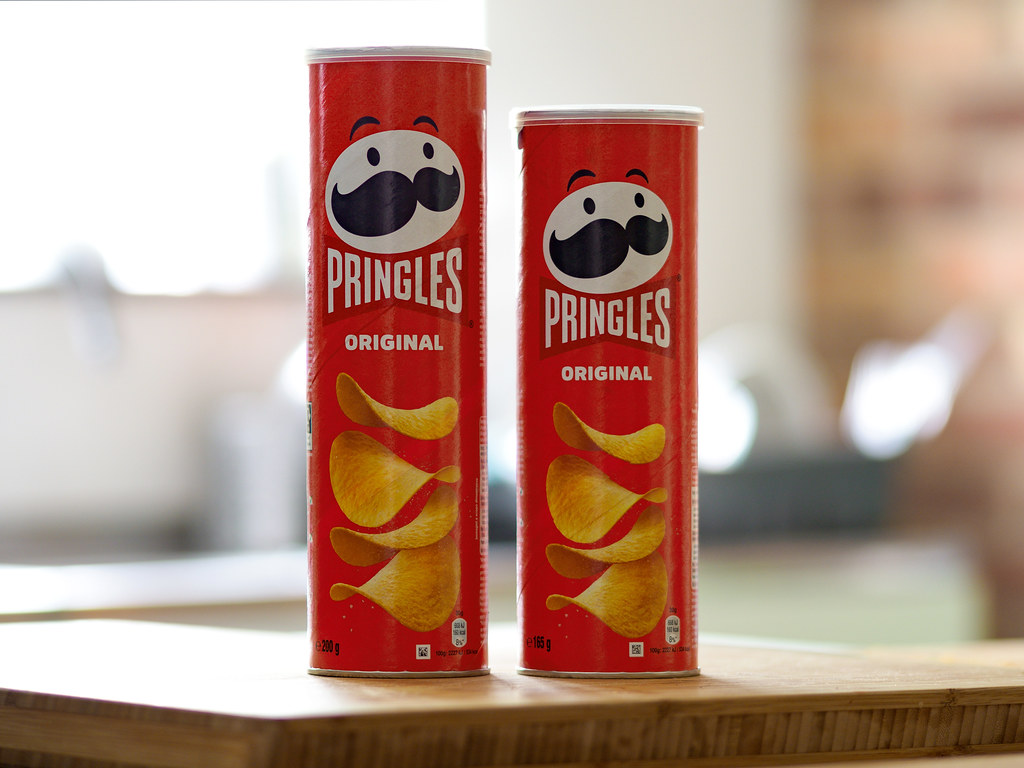
You grab a familiar box of crackers off the shelf, and it feels just a little bit lighter. The bag of chips you buy every week seems to have more air than usual. This isn’t your imagination; it’s a widespread and insidious phenomenon known as “shrinkflation,” a cunning tactic that allows manufacturers to subtly reduce the amount of product in a package rather than increasing the sticker price. It’s a quiet but effective way to protect profit margins, leaving consumers paying more for less, often without even realizing it until their pantry feels emptier than usual.
This stealthy strategy is a direct response to rising ingredient, labor, and transportation costs. Instead of alarming consumers with obvious price hikes, brands hope shoppers won’t notice the smaller packages. This can be a bit more insidious than inflation itself, which is merely the reality of prices rising, as shrinkflation specifically targets the quantity of goods received. CBS News recently reported that as many as one-third of all grocery items have experienced this form of hidden cost increase, making it crucial for every shopper to become a vigilant consumer.
To empower you in the face of this pervasive trend, we’ve conducted a thorough investigation into common grocery staples where shrinkflation has been frequently noticed. Our findings, based on real-world trends, data culled from grocery store shelves, expert interviews, and consumer surveys, aim to help you become a smarter shopper. By highlighting these specific examples and offering practical advice, we hope to arm you with the knowledge to identify and fight back against these deceptive marketing tactics, ensuring you get the true value for your hard-earned money.
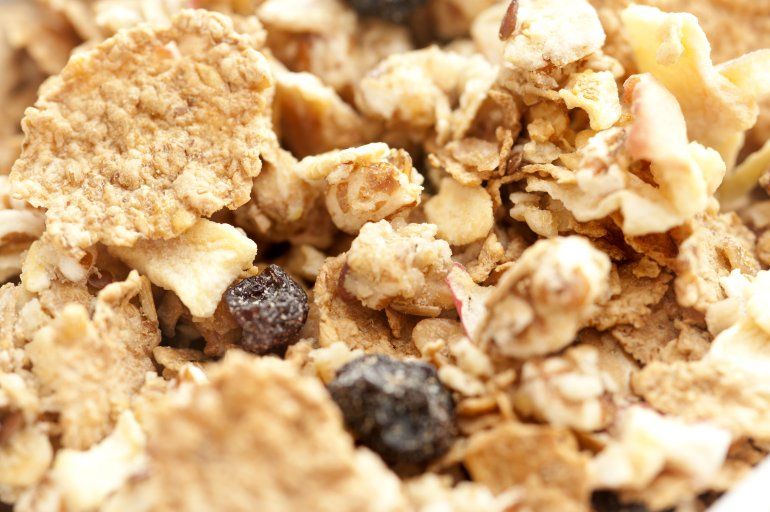
1. **Breakfast Cereal** Breakfast cereal boxes are a prime target for shrinkflation, a tactic that often goes unnoticed by the casual shopper. Manufacturers employ clever design changes, making the box slightly narrower or less deep while keeping the height and front-facing artwork the same. This makes the alteration difficult to spot at a glance, allowing brands to reduce the net weight without immediately drawing attention to the change. For instance, a box that once contained 18 ounces might now hold only 16.9 ounces for the same price, representing a silent increase in cost per serving.
This trend is not limited to a few obscure brands; both name brands and store brands are actively downsizing. For example, Coles’ Mighty Grain cereal went from 560g (about 19.75 oz) to 495g (about 17.5 oz), but the price remained at $4.50, a 12% reduction in product with no savings for the consumer. Woolworths’ Max Charge cereal made a similar move, and even classic corn flakes have shrunk from 475g to 440g, often with prices creeping up. A family-sized box of Kellogg’s Frosted Flakes, which used to contain 24 ounces, now contains just 21.7 ounces, leading to a significant 40% increase in price per ounce.
The Guardian reports that cereals like Cheerios, Kellogg’s Cornflakes, and Cinnamon Toast Crunch have been shrinking by several ounces. Manufacturers argue that these smaller sizes reflect rising production costs, but for consumers, it primarily means getting fewer servings for the same price. This directly impacts the overall cost per serving, making it feel like you’re paying more just to fill your breakfast bowl. To combat this, always check the net weight printed on the front of the box and compare the price per ounce to truly know what you’re getting. Often, buying your favorite cereal in the “Family Size” box or from warehouse clubs like Costco can still offer a better deal per ounce.
Read more about: Remember These? A BuzzFeed Blast from the Past: 15 Retro School Snacks We Miss So Hard!

2. **Ice Cream** The classic half-gallon (64 fluid ounces) carton of ice cream has become an endangered species on grocery store shelves, systematically reduced in size over the years by major brands. What was once a standard has now frequently shrunk, first to 1.75 quarts (56 ounces), and now commonly to 1.5 quarts (48 ounces). Some “pints” have even seen reductions, shrinking from 16 ounces to 14 ounces, a subtle yet impactful change for ice cream lovers. The container might visually appear tall, but its diameter is often narrower, cunningly disguising the reduced volume.
This downsizing is evident across many popular brands. Breyers, for example, reduced its tubs from 1.66 liters to 1.41 liters, yet the price remained unchanged, meaning consumers are getting about 15% less ice cream per purchase. While the new packaging might be sleeker, the underlying reality is a significant reduction in product. Similarly, Haagen-Dazs and Ben & Jerry’s have also seen changes, though the impact might seem less dramatic on premium brands where consumers expect higher prices.
The primary driver behind these reductions is the rising cost of ingredients, which have significantly increased in recent years, particularly affecting premium ice cream brands that pride themselves on high-quality components. Smaller tubs also offer an advantage to manufacturers by reducing shipping weight, helping to offset rising transportation costs. For consumers, this means you’re getting less ice cream for your money, even though you might pay the same price at checkout. A practical workaround is to seek out ice cream produced by local creameries, many of which still package their products in half-gallon cartons and often offer competitive price points compared to the major brand names.
Product on Amazon: Honey Nut Cheerios, Heart Healthy Gluten Free Breakfast Cereal with Whole Grain Oats, 10.8 oz
Brand: General Mills
Binding: Grocery Product Group: Grocery
Price: 1.97 USD
Rating: 4.8 Total reviews: 26480
Flavor: Honey Nut
Age Range (Description): Child
Item Form: RTE Cereal
Specialty: Whole Grain
Features:
1. MADE WITH REAL HONEY: Sweetened whole grain oat cereal with real honey and natural almond flavor in every delicious spoonful; Whole grain oats are the first ingredient in this honey nut cereal for kids and adults; An ideal pantry staple
2. CAN HELP LOWER CHOLESTEROL as part of a heart healthy diet; 3g of soluble fiber daily from whole grain oat foods, in a diet low in saturated fat and cholesterol, may reduce the risk of heart disease; Honey Nut Cheerios provides .75g per serving
3. GLUTEN FREE CEREAL: Pour it in a bowl with cold milk for an irresistible, gluten free part of an easy breakfast; Pack some up in a lunch box for gluten free snacks on the go; Add to homemade cereal bars and other kids snack food recipes
4. WHOLE GRAIN: 22g of whole grain (at least 48g recommended daily), 12 vitamins and minerals, and is a good source of calcium and fiber per serving
5. CONTAINS: One cardboard box of crunchy Honey Nut Cheerios, Heart Healthy Gluten Free Breakfast Cereal, 10.8 oz; Perfect for instant snacking, or a part of breakfast and meals
Shopping on Amazon >>
Read more about: Rev Up Your Engines! These 14 Stars Boast Jaw-Dropping, Priceless Classic Car Collections
3. **Potato Chips & Salty Snacks** Potato chip bags are famously known for their “slack fill,” the generous amount of air used to protect the fragile chips from crushing during transport. However, manufacturers are also frequently reducing the net weight of the chips themselves, often without changing the external bag size. A “family size” bag can quietly shrink from 10 ounces to 9, or even 8.5 ounces, presenting a clear example of shrinkflation where the bag looks the same, but the amount of product inside has diminished. The net weight printed on the package remains the only reliable measure of the actual value.
This practice is widespread, with chips being a classic case of shrinkflation. One brand’s bag recently dropped from 7 ounces to just 5 ounces, a nearly 30% reduction in snack for the same cash, and the packaging looked almost identical. Consumers have certainly noticed, often commenting on the disappearing chips. Classic brands like Lay’s and Pringles have also reduced their bag sizes, often going from 10.5 ounces to 9 ounces or even smaller, while the price per ounce has either stayed the same or increased.
The reasons cited for this downsizing include increased production costs for potatoes and labor, as well as rising costs for packaging materials. These pressures lead manufacturers to make adjustments to maintain profit margins. For instance, many shoppers have experienced the frustration of buying a seemingly giant bag of Doritos, only to find more than half of it filled with air upon opening. This ongoing trend means that if you’re craving a substantial bag of chips, you might find yourself needing to buy more to satisfy your hunger than you did in the past, underscoring the importance of scrutinizing net weights and unit prices.
Read more about: Remember These? A BuzzFeed Blast from the Past: 15 Retro School Snacks We Miss So Hard!

4. **Coffee** For many years, a standard one-pound (16-ounce) can of coffee was a common sight in kitchens across the nation. Today, this size has become a relic, as most major brands have systematically reduced the contents to around 10 to 12 ounces, representing a significant decrease in product for the same, or even higher, price. Bags of whole bean or ground coffee have followed the same concerning trend, with 12-ounce bags often shrinking to 11 or even 10 ounces. The packaging frequently looks deceptively similar to its older, heavier version, making the change hard to spot without a careful examination of the net weight.
This shrinkflation in coffee is not surprising, especially amid current tariff pressures and global unrest, which have contributed to rising costs. Green coffee prices, for instance, have increased by over 30% since January 2024 alone, putting immense pressure on manufacturers. Brands like Folgers have responded by downsizing their 51-ounce container to 43.5 ounces, delivering less coffee for consumers in their morning ritual. These smaller quantities mean that the cost per cup, when measured by volume, has effectively increased, even if the sticker price at the checkout remains unchanged.
Several coffee brands have been quietly reducing the size of their bags and cans, providing less coffee for the same expenditure. This necessitates a more diligent approach to purchasing. To counteract this trend, consumers should make it a habit to buy coffee in bulk from warehouse clubs like Costco or to stock up when their preferred brands go on sale at the grocery store. By focusing on the unit price, which is the cost per ounce, you can often secure a much better deal than by simply grabbing the familiar 11-ounce bags, which now represent a less economical purchase than they once did.
Product on Amazon: Kettle Brand Potato Chips Variety Pack, 1 Oz, 20 Ct
Brand: Kettle Brand
Binding: Grocery Product Group: Grocery
Price: 8.99 USD
Rating: 4.5 Total reviews: 13557
Flavor: Variety Pack 2
Unit Count: 20.0 Ounce
Number of Items: 20
Type: Potato Chip
Features:
1. INDIVIDUAL SIZED: Variety pack of 20, 1-ounce bags of chips, perfect for home or on-the-go
2. THREE GREAT FLAVORS : 7 bags of Sea Salt, 7 bags of Sea Salt & Vinegar, and 6 bags of Backyard Barbeque
3. KETTLE-COOKED CHIPS: These potato chips have bold flavor and hearty, kettle-cooked crunch
4. OUR NATURAL PROMISE: Made with quality ingredients, Non-GMO Project Verified and Certified Gluten-Free
5. DELICIOUSLY CONVENIENT: Feed all your cravings anytime with Kettle Brand potato chips
Shopping on Amazon >>
Read more about: What Jennifer Aniston Really Looks Like Without Makeup On: A Candid Look at Her Unfiltered Beauty

5. **Yogurt Cups** Single-serving yogurt cups have also been on a noticeable diet, a subtle yet widespread example of shrinkflation impacting daily consumables. What used to be a standard 6-ounce container for many brands is now commonly found at 5.3 ounces, and some have even shrunk further to 5 ounces. While the difference in size may seem small on the surface, this 10-15% reduction in volume represents a significant price increase on a per-ounce basis, even if the price per cup remains low and seemingly appealing. It’s a subtle change that, unfortunately, adds up over time for frequent consumers.
This shrinking trend is not confined to a single brand, as popular varieties from Yoplait and Chobani have both seen these reductions. The price, however, remains stubbornly high or has even increased in many cases, meaning shoppers are consistently paying more for less yogurt. The primary driver behind the shrinking size of yogurt cups is largely linked to rising dairy costs, which have affected manufacturers across the board, making it more expensive to produce their products. To offset these costs without overtly raising prices, reducing the portion size becomes an attractive strategy.
While smaller servings might appeal to some consumers for portion control or calorie management, for those who buy yogurt in bulk for their families, this shrinkage is certainly noticeable and can be frustrating. As the price per ounce increases, it becomes clear that yogurt may no longer be the affordable snack it once was. A smart workaround is to opt for larger volume, multi-serving yogurt containers. These typically offer a much lower price per ounce compared to the individual-sized cups, providing a more economical choice for regular yogurt consumption and helping consumers stretch their grocery budget further.
Read more about: Remember These? A BuzzFeed Blast from the Past: 15 Retro School Snacks We Miss So Hard!
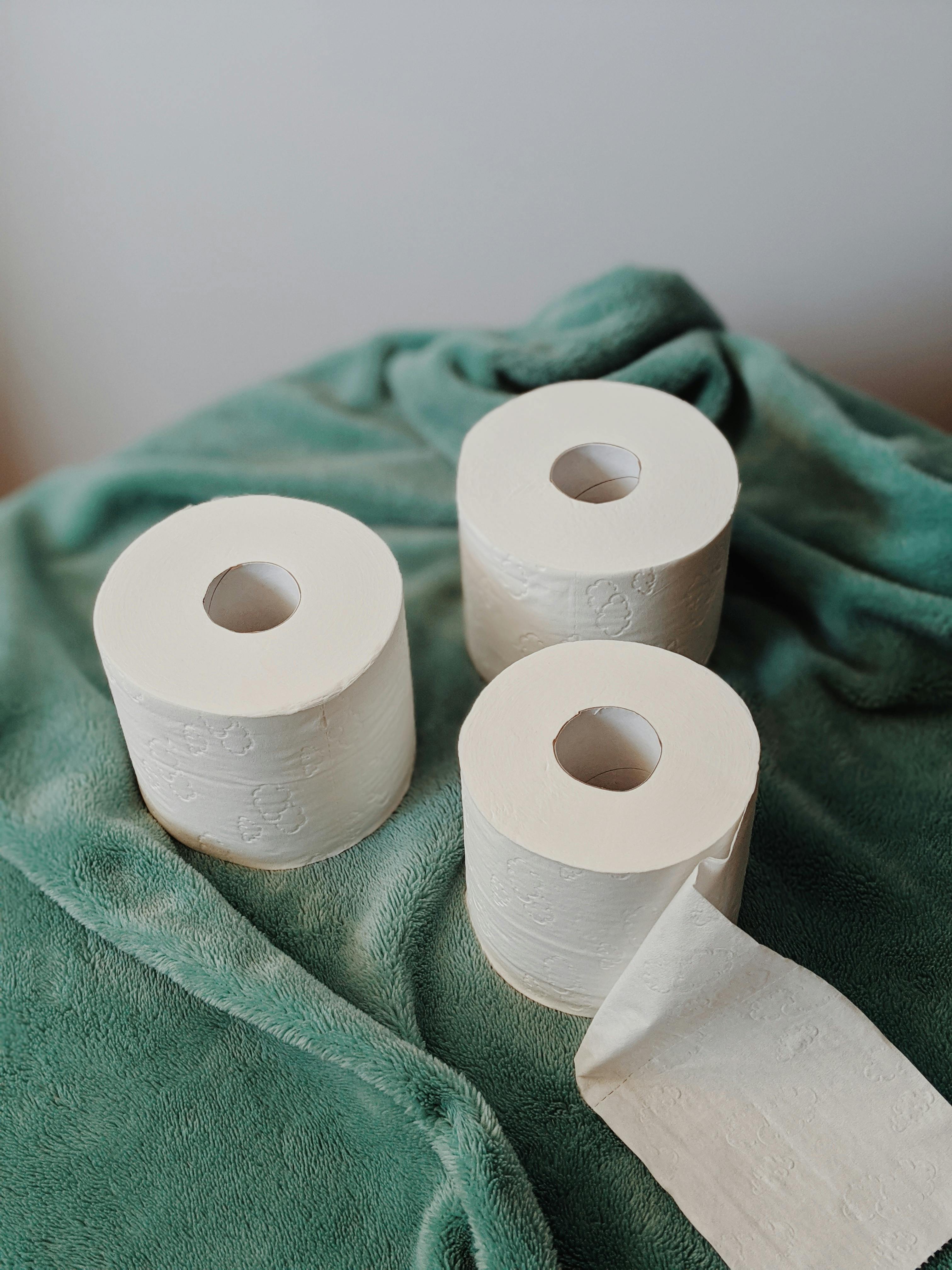
6. **Household Paper Products (Toilet Paper & Paper Towels)** Even essential household paper products, surprisingly, have not been immune to the pervasive effects of shrinkflation. This category, encompassing both toilet paper and paper towels, has shown one of the highest rates of hidden price increases. Manufacturers have found various ways to reduce the product without altering the sticker price, primarily by decreasing the number of sheets per roll or making the size of each sheet slightly smaller. Another common tactic involves enlarging the cardboard tube in the center of the roll, which can make the roll appear just as substantial while containing less product.
Confusing marketing terms further complicate direct comparisons. Labels like “Mega Roll” versus “Super Roll” make it incredibly difficult for consumers to accurately gauge value, relying instead on vague promises of longevity. The most reliable metric for these products is the total square footage listed on the package, which provides an objective measure of the actual amount of paper. For instance, the average size of toilet paper sheets, which used to be around 4.5 inches, now often comes in closer to 4 inches, a seemingly minor change that significantly reduces the overall product.
This trend has a real impact on household budgets. CBS News reported that Seventh Generation alone saw an almost 60% increase in price per 100 count for their toilet paper from 2020 to 2023, rising from $1.70 to $2.70. Supply chain problems, stemming from less lumber on the market, have made pulp harder and more expensive to manufacture, driving these cost pressures. Some brands have been found to have 25% fewer sheets than they did a few years ago. To fight back, vigilant consumers should prioritize checking the total square footage and unit price. Buying from warehouse clubs like Costco can often provide better value, as their toilet paper sheets, for example, still measure 4.5″ x 4.0″, significantly larger than those from many popular brands.
Product on Amazon: 12 oz Clear Plastic Parfait Cups with Insert 3.25oz & Flat Lids No Hole – (50 Sets) Yogurt Fruit Parfait Cups for Kids, for Dips and Veggies, Take Away Breakfast and Snacks. No Leaking
Brand: Aatriet
Binding: Product Group: BISS
Price: 19.99 USD
Rating: 4.7 Total reviews: 2382
Color: Clear
Material: Plastic
Material Feature: Recyclable
Capacity: 12 ounces
Features:
1. A MONEY SAVER. Save a lot of cash by making your own fruit parfait for the children. Good way to get rid of all the fruit they don’t eat when it’s still in the fridge packaging. Total 150 pieces include 50 cups, 50 no-hole flat lids and 50 insert.
2. KIDS’ FRIENDLY. You can pack the yogurt parfaits in the kids lunches now. They are perfect size, and so convenient for your kids to just grab & go. No leaking. No spills. No mess.
3. Perfect for individual servings, such as yogurt parfait, fruit parfait, granola parfait, banana pudding, dips and veggies, take away breakfast and snacks.
4. Multi-purpose for many occasions: birthday party, celebration, weddings, baby showers, bakeries and catering events, picnic, bake sale, just grab and go.
5. HIGH QUALITY – BPA free and Food Safety Plastic: Aatriet cups are made of premium, clear, sturdy and durable food safety PET (Polyethylene terephthalate) with no toxins or harsh chemical additives. Safe for cold drinks and dessert.
Shopping on Amazon >>
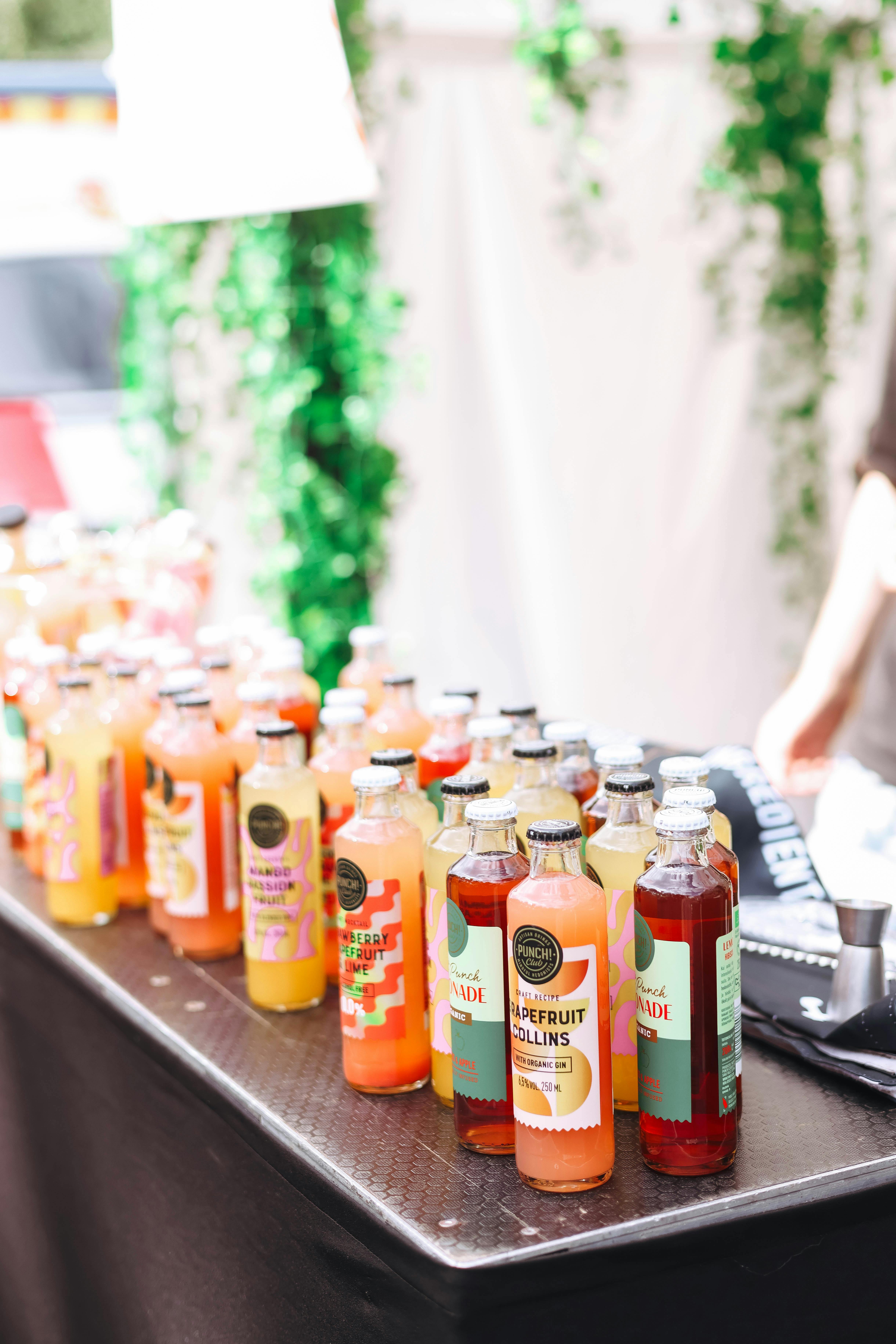
7. **Juice and Beverage Bottles** The juice and beverage aisle is another arena where shrinkflation tactics are subtly at play, particularly with bottles of juice, sports drinks, and sodas. Manufacturers often get creative with packaging design to disguise volume reductions. A common strategy involves adding a larger indentation or “punt” at the bottom of the bottle, or designing the bottle to be slightly narrower and taller. These changes maintain a similar visual height on the shelf, making it harder for consumers to notice that they are actually getting less product.
Over time, a large bottle of orange juice, for example, might have quietly shrunk from 64 fluid ounces down to 59 or even 52 fluid ounces, while the price remains unchanged. A notable instance saw Tropicana replace their 59 oz containers with 52 oz clear plastic jugs, keeping the price consistent. The tricky part of this deal is that the jugs look identical from the front view, as they were simply made slimmer. Unless you carefully examine the small print on the bottom of the jug indicating the size, the difference is almost imperceptible when lined up with other products.
This deceptive practice means you are consistently paying the same amount for a reduced quantity of your favorite beverages, effectively increasing the cost per fluid ounce. To ensure you’re getting the best value, it is crucial to always look at the price per ounce when buying juices and other beverages. If you are not a brand-specific shopper, prioritizing the best deal available based on unit pricing is an effective way to combat this hidden price increase. This diligent approach ensures that you are making informed purchasing decisions rather than falling victim to subtle packaging redesigns.
Read more about: Remember These? A BuzzFeed Blast from the Past: 15 Retro School Snacks We Miss So Hard!

8. **Pasta Boxes** Pasta, a quintessential pantry staple for countless households, has also begun to show signs of shrinkflation in some of its packaging. While a standard box of pasta is often still one pound (16 ounces), this category is increasingly one to watch closely. Some brands have started to introduce slightly smaller boxes, perhaps 12 or 14 ounces, particularly for specialty shapes or gluten-free varieties. This seemingly minor decrease, however, means you are getting less pasta for the same price, a fact that can be particularly frustrating for larger families or individuals who cook pasta regularly.
The reduction in pasta size is primarily attributed to the rising costs for wheat and energy, two key components in pasta production. These increased overhead costs drive manufacturers to seek ways to maintain profit margins without explicitly raising the sticker price. By reducing the volume, companies can effectively keep prices stable while dealing with the escalating expenses. Consumers may not even notice the difference until they are preparing dinner and realize the portion size is smaller than what they are accustomed to.
As grain prices fluctuate globally, this is a category where shrinkflation could become even more common, making vigilance essential. To ensure you are truly getting your money’s worth, always double-check the net weight on pasta boxes. While it might mean needing to buy additional boxes to meet the same needs for a meal, understanding the true quantity you are receiving is critical. The best defense, across all grocery items, is to become a vigilant consumer, focusing on the net weight or fluid ounce information and, most importantly, comparing the unit price between different products and sizes to measure true value.
Continuing our investigation into the subtle but impactful world of shrinkflation, we uncover more everyday products where consumers are quietly getting less for their money. Understanding these changes is the first step towards becoming a more informed and empowered shopper. By keeping a critical eye on packaging and unit prices, you can protect your grocery budget against these hidden cost increases. Let’s delve into more examples of how shrinkflation is reshaping our shopping carts.
Read more about: Honest Question: What Gives? 12 Once-Popular American Eats Nobody Touches Now

9. **Snack-Sized Candy Bars**For those who enjoy a small treat, snack-sized candy bars have unfortunately not escaped the effects of shrinkflation. A common tactic employed by manufacturers involves quietly reducing the number of bars in a multipack without adjusting the price. This can mean a shift from a 5-pack to a 4-pack, representing a significant 20% reduction in treats that is often cleverly disguised by nearly identical packaging. Such changes are designed to go unnoticed, yet they directly impact the value consumers receive.
For those who enjoy a small treat, snack-sized candy bars have unfortunately not escaped the effects of shrinkflation. A common tactic employed by manufacturers involves quietly reducing the number of bars in a multipack without adjusting the price. This can mean a shift from a 5-pack to a 4-pack, representing a significant 20% reduction in treats that is often cleverly disguised by nearly identical packaging. Such changes are designed to go unnoticed, yet they directly impact the value consumers receive.
The trend extends to larger, party-size bags as well, where popular items like Reese’s Miniature Cups have seen their package size decrease. What was once a 40-ounce bag might now only contain 35.6 ounces, an 11% reduction in total product. This shrinkage is compounded by a notable surge in the price per ounce, which for Reese’s Miniature Cups has climbed by about 68.2%, making these beloved peanut butter and chocolate treats considerably more expensive on a unit basis.
Similarly, fans of Rolo Chewy Caramels have observed an identical reduction, with party-size bags shrinking from 40 ounces to 35.6 ounces, also reflecting an 11% decrease in product volume. This seemingly minor change comes with a substantial 68.2% increase in cost per ounce. Such shifts are part of a broader pattern across the candy industry, where manufacturers adjust package sizes to navigate inflation and rising production costs.
These adjustments, while often subtle, can be frustrating for consumers who may not realize they are receiving less product until they open the bag. Shoppers might mistakenly believe they are getting the same deal, but the underlying price hike is substantial. To counteract this, always check the net weight and unit price, especially on multi-packs and party-sized bags, to ensure you are getting true value for your money.
Read more about: 12 Legendary Childhood Snacks That Need an Epic Comeback Right Now (Seriously, What Were They Thinking?!)
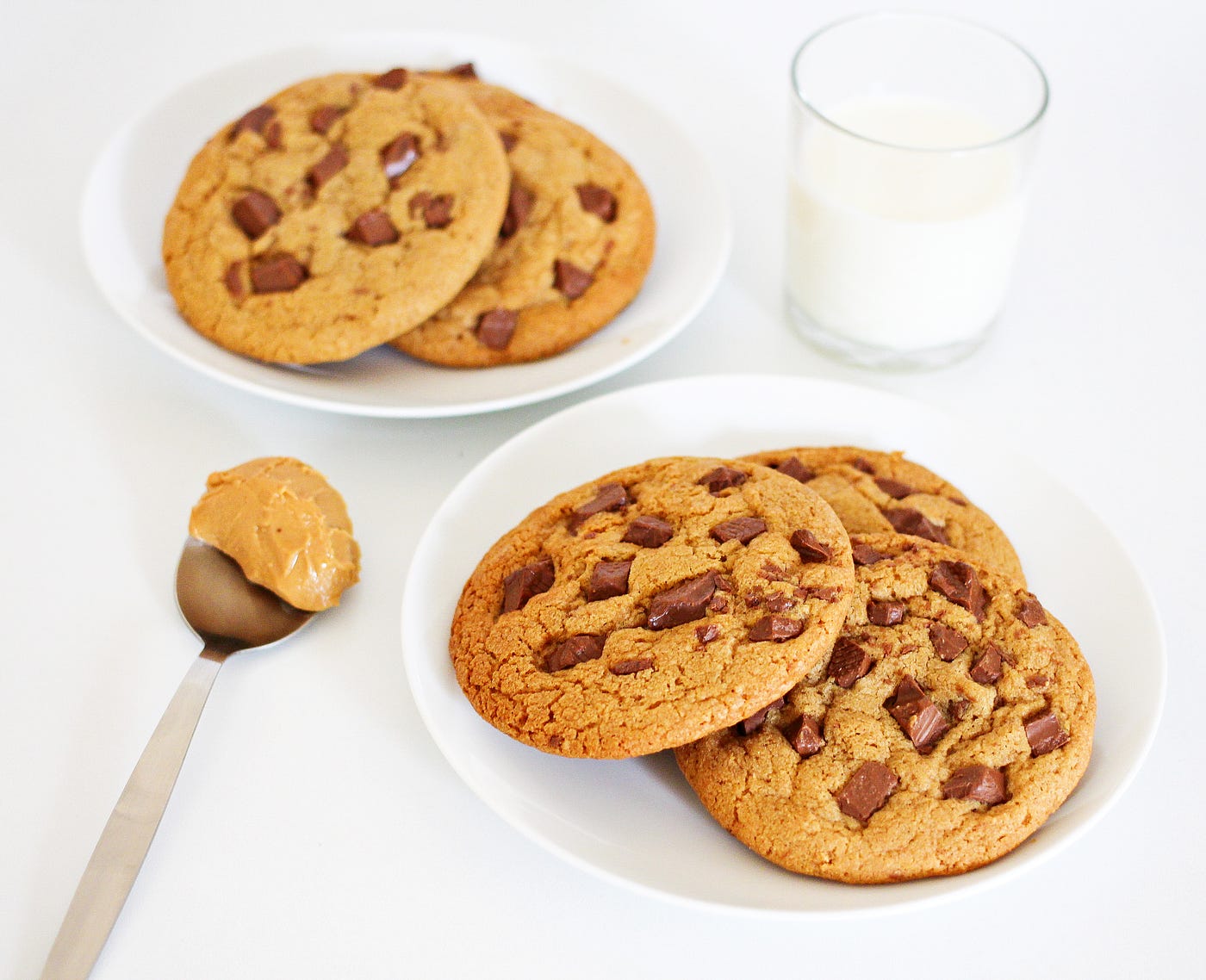
10. **Biscuits & Cookies**The beloved biscuit and cookie aisle is another area where shrinkflation has taken a firm hold, with products shrinking worldwide. Consumers have reported that popular brands of digestive biscuits and other cookies are increasingly delivering less product per pack. For instance, the iconic McVities Digestives, a staple for many, saw its pack size drop from 400g to 355g, all while its price remained unchanged at $4.40. This means you are paying the same amount for a noticeably smaller quantity.
Another example can be found with Go Ahead “forest fruit” biscuits, which experienced a reduction from 218g to 174g without any corresponding price drop. These changes highlight a pervasive issue where manufacturers are passing on increased costs by subtly reducing package contents. In fact, reports indicate that biscuits have been one of the categories hardest hit by shrinkflation across all grocery categories, particularly in regions like the UK.
This reduction in quantity can be especially frustrating for families or individuals who rely on these items as regular snacks or accompaniments to their daily routine. The smaller number of biscuits or cookies per pack means that they may be consumed faster, leading to more frequent purchases and an overall increase in grocery expenses. The packaging often remains visually similar, making it challenging for consumers to detect the change without careful inspection.
To ensure you are getting the most value, it is essential to pay close attention to the net weight listed on biscuit and cookie packages. Comparing the weight of different brands or even the same brand over time can reveal these hidden reductions. Prioritizing products with a lower price per gram or ounce, irrespective of the initial sticker price, is a smart strategy to combat this form of shrinkflation and make more informed purchasing decisions.
Read more about: Beyond the Stars and Stripes: Unmasking the Surprising International Roots of 15 ‘All-American’ Foods
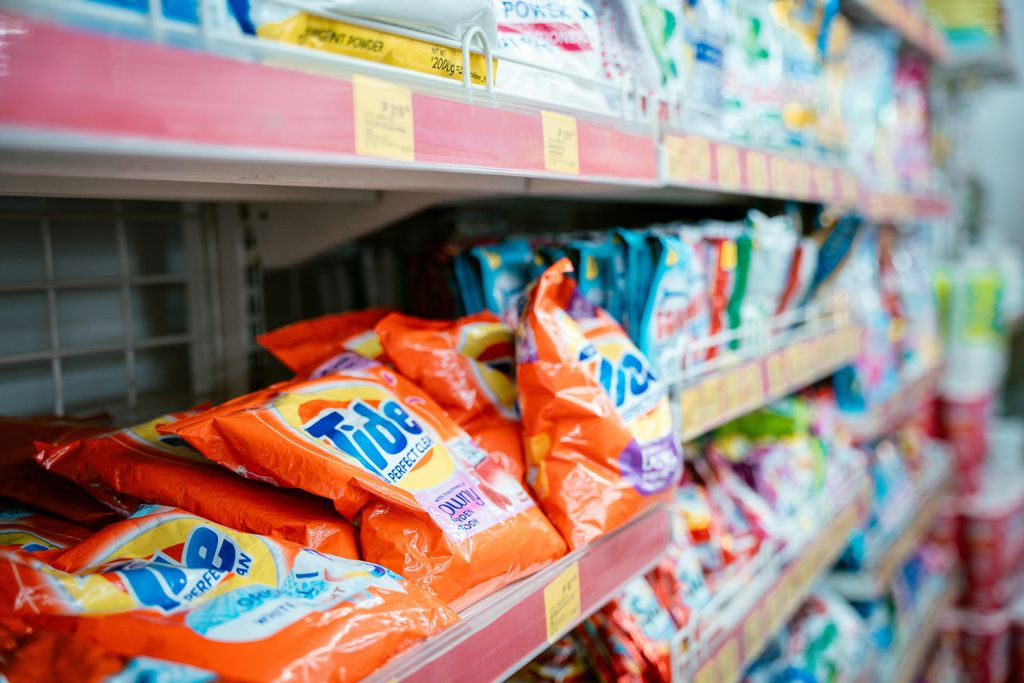
11. **Laundry Detergent**While the effects of shrinkflation are often most noticeable in food items, household essentials like laundry detergent are not immune to this stealthy practice. In fact, laundry detergent and other household cleaners can be among the least obvious areas where consumers might detect downsizing, as it’s uncommon to meticulously check the fill level of a bottle. Despite this, manufacturers like Tide and Dove have been found to have shrunk their products while simultaneously raising prices, effectively hitting consumers with a double whammy.
Many detergent brands have subtly reduced the size of their bottles over time. What was once a standard 100-ounce bottle, for example, might now contain 92 ounces or even less. This change, while seemingly minor, represents a reduction in product volume that impacts the number of loads consumers can wash. The sticker price, however, often remains stubbornly high or has even increased, making it crucial to examine the price per load or per ounce to understand the true cost.
Rising ingredient and packaging costs are frequently cited as the primary drivers behind these reductions. By decreasing bottle sizes, companies can manage these increased overheads without overtly hiking the price per unit, and smaller, lighter bottles also contribute to reduced shipping costs. Unfortunately, this strategy means that consumers are getting fewer washes for their money, a direct impact on household budgets.
For consumers who rely on bulk purchases or wish to maximize their value, vigilance is key. Always scrutinize the net volume printed on laundry detergent bottles. Comparing the unit price (cost per ounce or per load) across different brands and package sizes is the most effective way to identify instances of shrinkflation and ensure you are making an economical choice for your household cleaning needs. This diligent approach helps to ensure you’re not caught paying more for less.
Read more about: Unlock the Secret to Amazingly Fresh Laundry: 15 Simple Tricks for an Incredible Scent Every Time

12. **Peanut Butter Jars**Peanut butter, a versatile and nutritional pantry staple, has also become a target for shrinkflation, often escaping the notice of even dedicated shoppers. Appreciated for its protein, fiber, and healthy fats, peanut butter is a favorite among diverse consumers. However, many may not have realized that the jars of their preferred brands have become smaller over recent years, leading to a subtle yet consistent decrease in the amount of product purchased.
It is more critical than ever for consumers to be discerning about the value they receive for their grocery purchases. Companies have been quietly implementing reductions in the size of peanut butter jars. A report by Consumer Reports highlights the extent of this trend, revealing that some brands have decreased their jars’ sizes by as much as two ounces. This translates directly to consumers receiving less peanut butter for the same price they have grown accustomed to paying.
The reduction in jar size is a clever way for manufacturers to cope with rising production costs, including ingredients like peanuts and oils, as well as packaging and transportation expenses, without having to implement an overt price increase. These subtle changes exploit consumer habits, as shoppers often grab the familiar-looking jar without scrutinizing the net weight, leading to an unconscious acceptance of paying more per ounce.
To combat this hidden increase, it is essential to always check the net weight prominently displayed on peanut butter jars. Comparing different brands and sizes based on their price per ounce will quickly reveal which products offer the best value. This proactive approach allows consumers to make informed decisions and ensure they are maximizing their grocery budget, rather than unknowingly subsidizing manufacturer costs through reduced product quantities.
Read more about: Stop Overpaying: Uncovering the Hidden Markups on 10 Common Grocery Items You Buy Every Time You Shop

13. **Chocolate Bars**Beyond snack-sized multi-packs, even classic, individually wrapped chocolate bars have fallen victim to shrinkflation, a bitter pill for many consumers. Iconic brands such as Hershey’s or Snickers have seen their standard bars trimmed down in size. For instance, a Hershey’s bar that traditionally weighed 1.55 ounces has in some instances been reduced to just 1.4 ounces, while its price either remained static or subtly increased. This seemingly minor adjustment cumulatively results in consumers paying more for less chocolate.
This reduction in chocolate bar size is particularly pronounced in certain markets, with the UK being a notable example where several popular brands have significantly downsized their products. Reports, including those from BBC News, indicate that some chocolate bar brands have slashed their sizes by as much as 20% without implementing a corresponding decrease in price. These changes can be particularly disheartening for consumers who cherish these treats as small, affordable indulgences.
The primary impetus behind these shrinking dimensions is the escalating cost of key ingredients such as cocoa and sugar, coupled with rising manufacturing expenses. In an effort to maintain appealing price points and profit margins, chocolate manufacturers resort to strategies like smaller packaging or producing thinner bars. The unfortunate consequence for consumers is that they are paying a premium price for a bar that offers less satisfaction than it did just a few years ago.
Therefore, if you find yourself craving a chocolate bar, it is wise to be prepared for a potentially smaller serving than you might remember, at a price that can feel disproportionately high. To be a savvy shopper, always check the net weight of individual bars and consider the price per ounce. This allows you to accurately gauge value and avoid inadvertently paying more for a diminished sweet treat.
Read more about: Vic Flick, Guitarist Who Plucked the Iconic James Bond Theme into History, Dies at 87

14. **Canned Tuna**Canned tuna, a time-honored pantry staple prized for its high protein content and extended shelf life, has also experienced a notable case of shrinkflation. For many decades, a standard can of tuna typically weighed 7 ounces. However, consumers today would be hard-pressed to find a can of this size, as most brands have systematically reduced the contents to 5 ounces or even less. This substantial decrease in product quantity comes without a corresponding reduction in price, making the cost per ounce significantly higher than in the past.
As a convenient and quick meal option, canned tuna is frequently purchased in bulk, making these subtle reductions particularly impactful on household budgets. Many tuna manufacturers have quietly implemented these changes, resulting in consumers receiving less fish for the same expenditure. A study by the National Consumers League, for example, revealed that some brands have decreased their can size by as much as 20%, an alteration that can easily go unnoticed by habitual shoppers.
The motivation behind these size reductions is often linked to rising operational costs, including sourcing the fish, processing, and canning, as well as fluctuating global commodity prices. Rather than passing these increases directly to consumers through higher sticker prices, manufacturers opt for the less conspicuous method of reducing the product inside the familiar packaging. This strategy allows them to maintain profit margins while relying on consumer inattention.
To ensure you are getting optimal value when purchasing canned tuna, it is critical to always check the net weight indicated on the can. Comparing the unit price across different brands and package sizes will reveal the true cost-effectiveness of your purchase. Stocking up during sales or when grocery store coupons are available can also be an effective strategy to counteract these hidden price increases and maximize your grocery savings.
Read more about: Unmasking the Unseen: 10 Everyday Kitchen Items Secretly Leaching Microplastics into Your Meals and Threatening Your Health
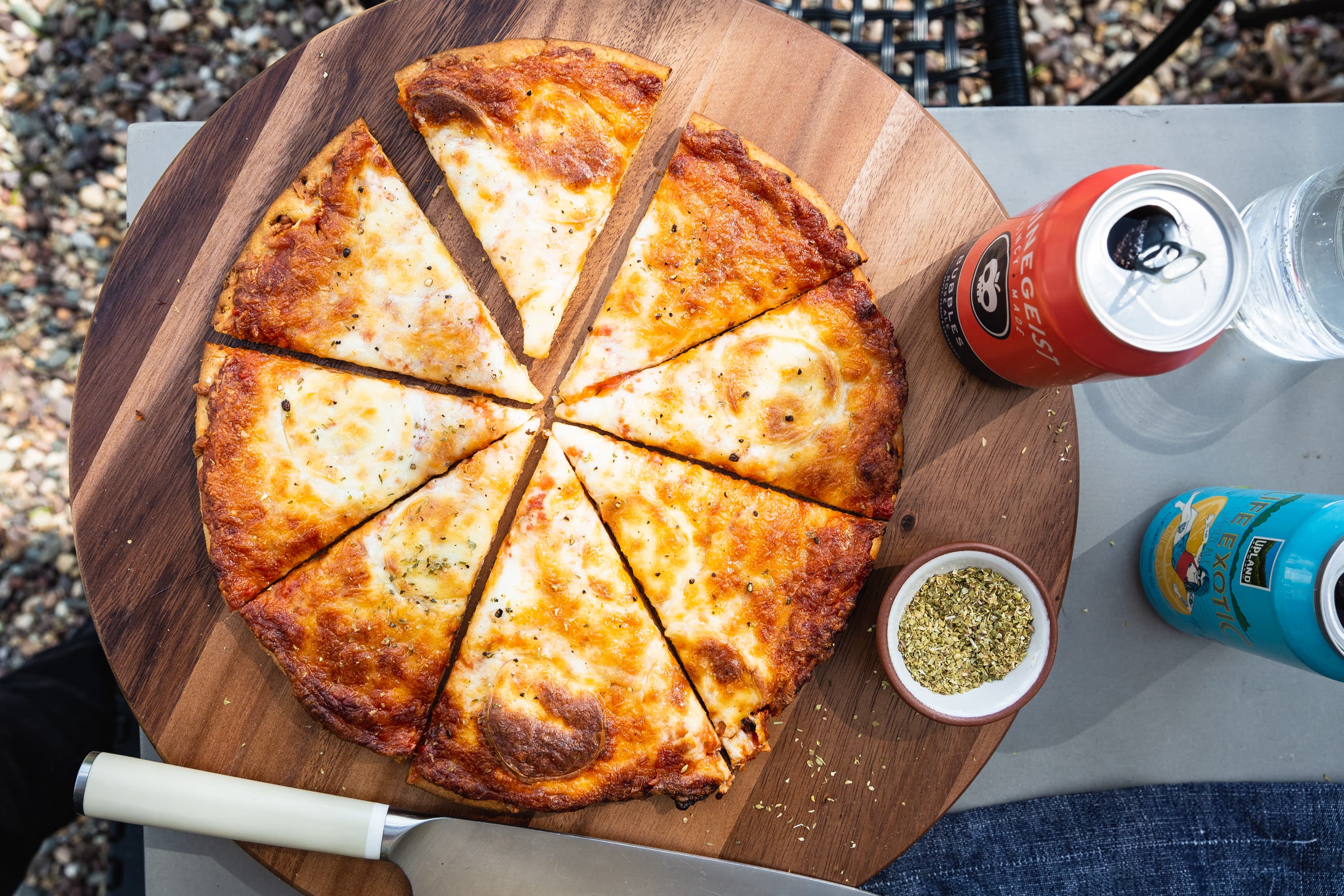
15. **Frozen Pizza**For many who cherish the convenience and comfort of a frozen pizza, a noticeable change has been creeping into the freezer aisle: shrinking pies. Consumers who are fans of frozen pizza brands have likely observed that their favorite options have become smaller in recent months. Pizzas that once boasted a generous 12-inch diameter are now frequently sold as 11-inch or even 10.5-inch versions. Crucially, while the size of the pizza has diminished, the price has often remained unchanged, or in some cases, has even increased.
This shrinking trend is not exclusive to niche brands but applies to many popular varieties, including household names like DiGiorno and Red Baron. Manufacturers frequently cite rising ingredient and transportation costs as the primary justifications for these size reductions. Smaller pizzas also offer an advantage to companies by allowing for better management of their supply chains, potentially easing storage and shipping logistics.
However, for the consumer, this translates directly into paying the same amount for less pizza. The implications are particularly frustrating for families, who may now find themselves needing to purchase a second pizza more often to feed the same number of people. It serves as a stark reminder that even everyday comfort foods are being significantly impacted by broader economic trends and the pervasive nature of shrinkflation.
To navigate this shrinking market, it is vital to pay close attention to the stated size and net weight of frozen pizzas. While a visual comparison on the shelf might not immediately reveal the difference, checking these details and, most importantly, comparing the price per ounce or per unit of area can help you identify the best value. Being a vigilant consumer ensures that your weekend treat remains a satisfying one, both in taste and in value.
Read more about: Honestly, What Happened? 15 Once-Beloved American Foods That Vanished from Our Tables
As we’ve seen, shrinkflation is a cunning, pervasive force reshaping our grocery shopping experience, touching everything from breakfast cereals to frozen pizzas and even our cherished snack-sized candy bars. It’s a silent surcharge on our budgets, often invisible to the hurried eye. But here’s the good news: knowledge is power. By understanding the mechanisms behind these hidden reductions and adopting simple, vigilant shopping habits—like meticulously checking net weights and comparing unit prices—we can reclaim control over our purchasing decisions. Let’s make every dollar count and ensure we’re truly getting what we pay for, not just what manufacturers hope we won’t notice. Your wallet, and your pantry, will thank you.




